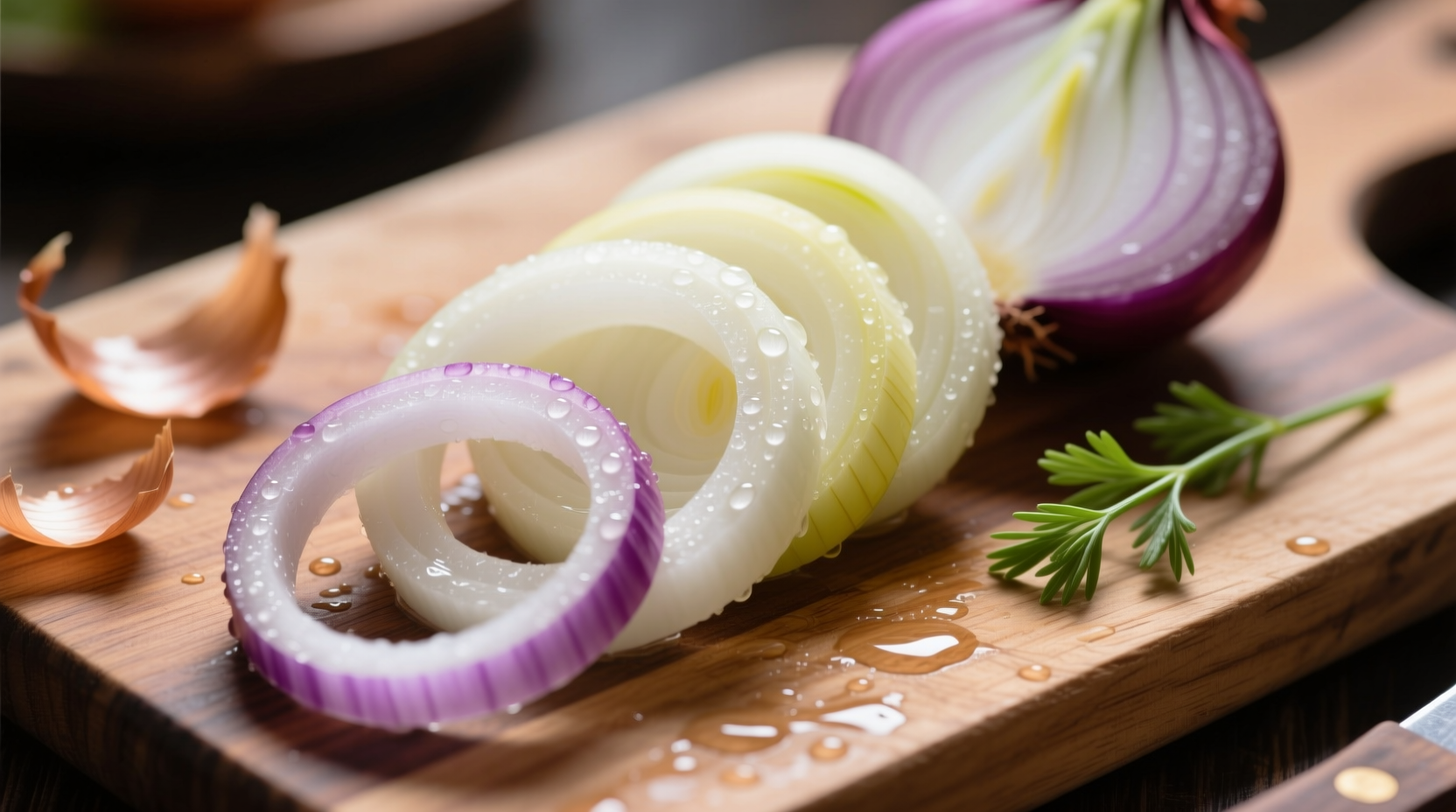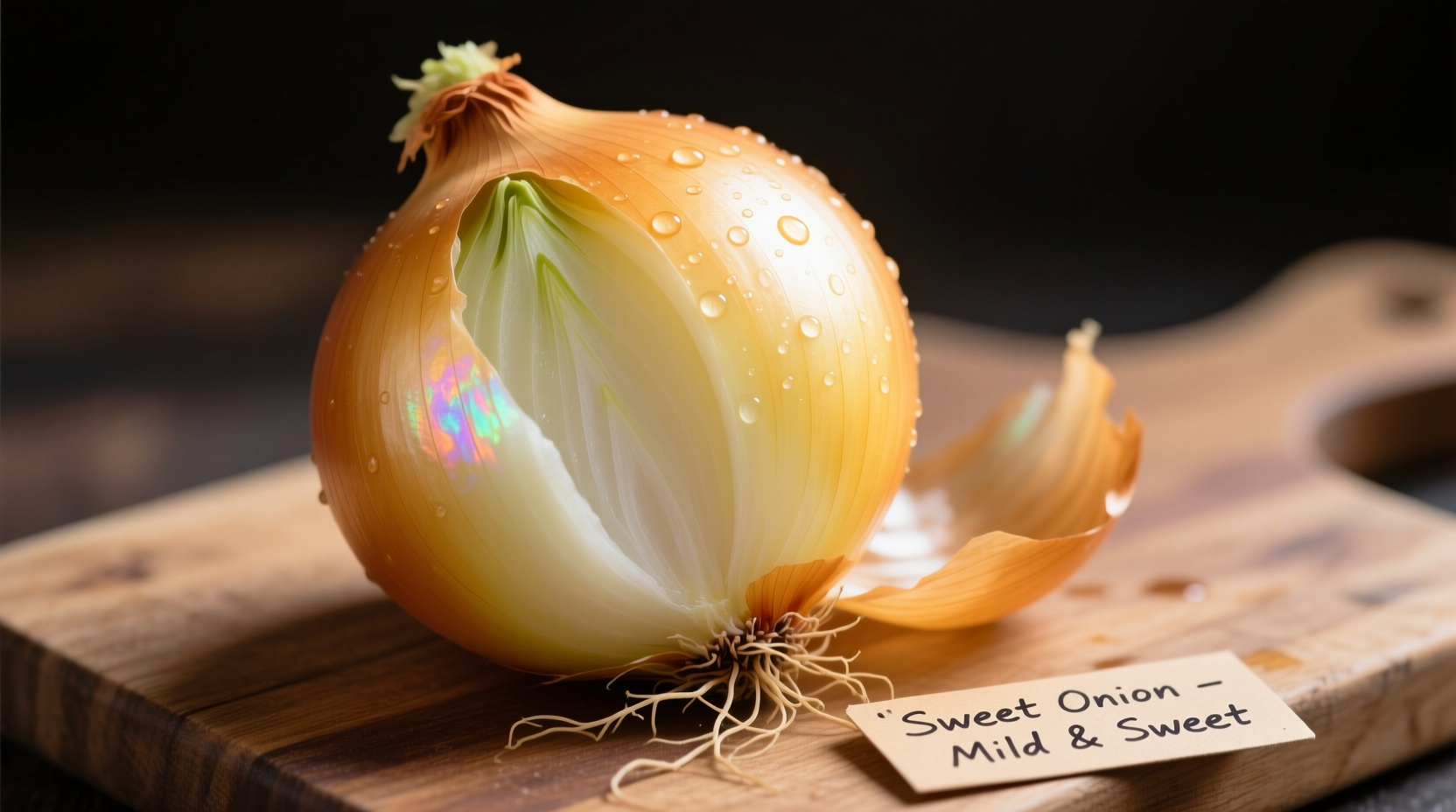Discover exactly what makes sweet onions special and how they can transform your cooking. Whether you're a home chef looking to elevate your salads or a grilling enthusiast seeking the perfect caramelized onion, understanding sweet onion varieties and their unique properties will help you make better culinary choices.
What Actually Makes an Onion "Sweet"?
The sweetness in onions comes down to chemistry. All onions contain sugars and sulfur compounds, but sweet varieties have been selectively bred to reduce the sulfur content that creates that characteristic pungent bite. When sulfur levels drop below 0.15% pyruvic acid concentration, onions register as "sweet" rather than pungent.
According to agricultural research from the University of Georgia College of Agricultural and Environmental Sciences, sweet onions contain approximately 5-6% sugar by weight—nearly double that of standard yellow onions. This natural sugar content combined with lower sulfur compounds creates that distinctive mild flavor profile that doesn't make you cry when chopping.
| Characteristic | Sweet Onions | Regular Yellow Onions |
|---|---|---|
| Pyruvic Acid Level | < 0.15% | 0.45-0.70% |
| Sugar Content | 5-6% | 3-4% |
| Water Content | 88-90% | 83-85% |
| Storage Life | 1-2 months | 4-6 months |
Popular Sweet Onion Varieties You Should Know
Not all sweet onions are created equal. Different regions produce distinctive varieties with subtle flavor differences:
- Vidalia onions - Grown exclusively in Georgia, protected by federal law since 1986. These have a distinctive honey-like sweetness with citrus notes.
- Walla Walla - Originating from Washington state, these large, flat onions have a delicate flavor perfect for onion rings.
- Maui onions - Grown in Hawaii's volcanic soil, these have a crisp texture and subtle pineapple undertones.
- Texas Sweet - Often labeled as 1015s (referring to their October 15 planting date), these have a balanced sweet-sharp profile.

When Sweet Onions Shine in Your Kitchen
Sweet onions excel in applications where you want onion flavor without overwhelming pungency:
For raw applications, sweet onions are unbeatable in salads, salsas, and sandwiches where regular onions would dominate the dish. Their high water content (88-90% compared to 83-85% in yellow onions) makes them particularly crisp and refreshing when eaten raw.
When cooking, sweet onions caramelize beautifully but require careful attention. Their higher sugar content means they can burn more easily than regular onions. Professional chefs like those at the Culinary Institute of America recommend cooking sweet onions over medium-low heat and adding a splash of vinegar to balance the sweetness during caramelization.
Smart Selection and Storage Tips
Choosing and storing sweet onions properly extends their short shelf life:
- Look for firm bulbs with dry, papery skins without soft spots
- Avoid onions with green sprouts, which indicate age
- Store in a cool, dark place with good air circulation (not in plastic bags)
- Refrigerate only if you've cut them—whole sweet onions do better at room temperature
- Use within 1-2 months as sweet onions don't store as long as regular varieties
Unlike regular storage onions, sweet varieties have higher water content and thinner skins, making them more perishable. The USDA Agricultural Research Service confirms that sweet onions begin to deteriorate after 60 days under optimal storage conditions, compared to 120-180 days for yellow storage onions.
Nutritional Benefits of Sweet Onions
Sweet onions offer similar nutritional benefits to other onion varieties but with a more palatable flavor profile for those sensitive to strong onion taste:
One medium sweet onion (110g) provides approximately 43 calories, 10g of carbohydrates, 2g of fiber, and significant amounts of vitamin C (12% of daily value) and B vitamins. Like all onions, sweet varieties contain quercetin, a flavonoid antioxidant associated with reduced inflammation and improved heart health.
The Journal of Agricultural and Food Chemistry published research showing that while sweet onions contain slightly less quercetin than yellow onions due to their lower sulfur content, their milder flavor encourages greater consumption, potentially leading to similar overall health benefits.
Frequently Asked Questions
Can I substitute sweet onions for regular onions in recipes?
Yes, but with adjustments. Sweet onions work well in raw applications without substitution. For cooked dishes, you may need to reduce added sugar since sweet onions contain more natural sugars. When caramelizing, cook at lower temperatures to prevent burning due to their higher sugar content.
Why do sweet onions make me cry less than regular onions?
Sweet onions produce less of the volatile sulfur compounds that react with your eyes' moisture to create that stinging sensation. With pyruvic acid levels below 0.15% (compared to 0.45-0.70% in yellow onions), sweet varieties release fewer irritating compounds when cut.
Are Vidalia onions the same as other sweet onions?
Vidalia is a specific type of sweet onion grown only in designated regions of Georgia under strict regulations. While all Vidalias are sweet onions, not all sweet onions are Vidalias. The unique low-sulfur soil in Georgia creates their distinctive flavor profile protected by a Federal Marketing Order since 1989.
How can I prevent sweet onions from spoiling quickly?
Store whole sweet onions in a cool, dark place with good air circulation—never in plastic bags which trap moisture. Keep them away from potatoes, which emit gases that accelerate spoilage. For cut onions, store in an airtight container in the refrigerator and use within 7 days. Their higher water content makes them more perishable than regular onions.











 浙公网安备
33010002000092号
浙公网安备
33010002000092号 浙B2-20120091-4
浙B2-20120091-4